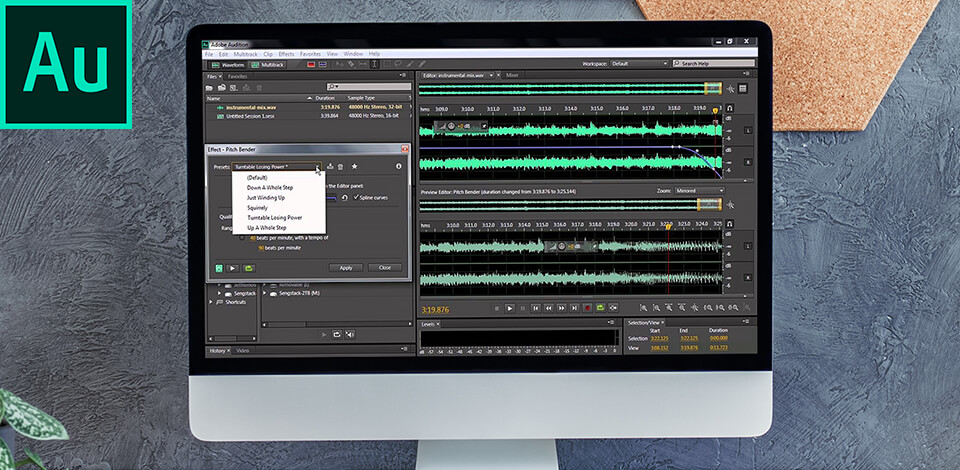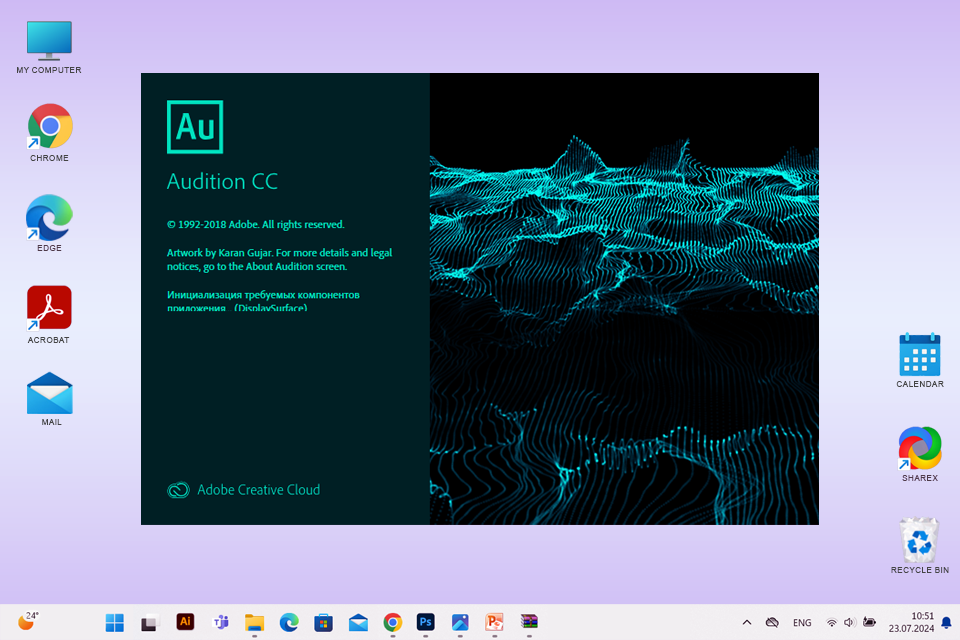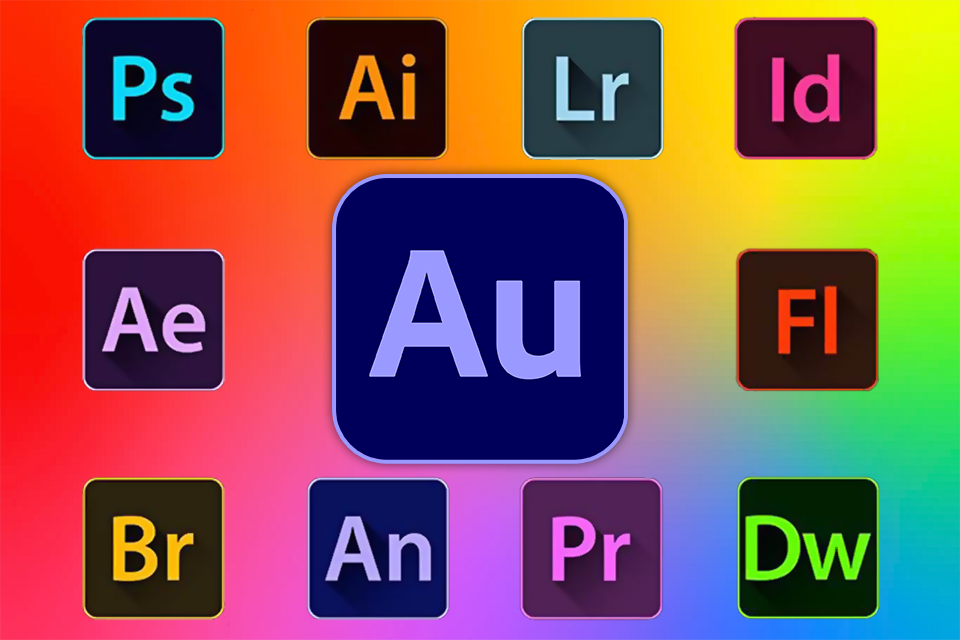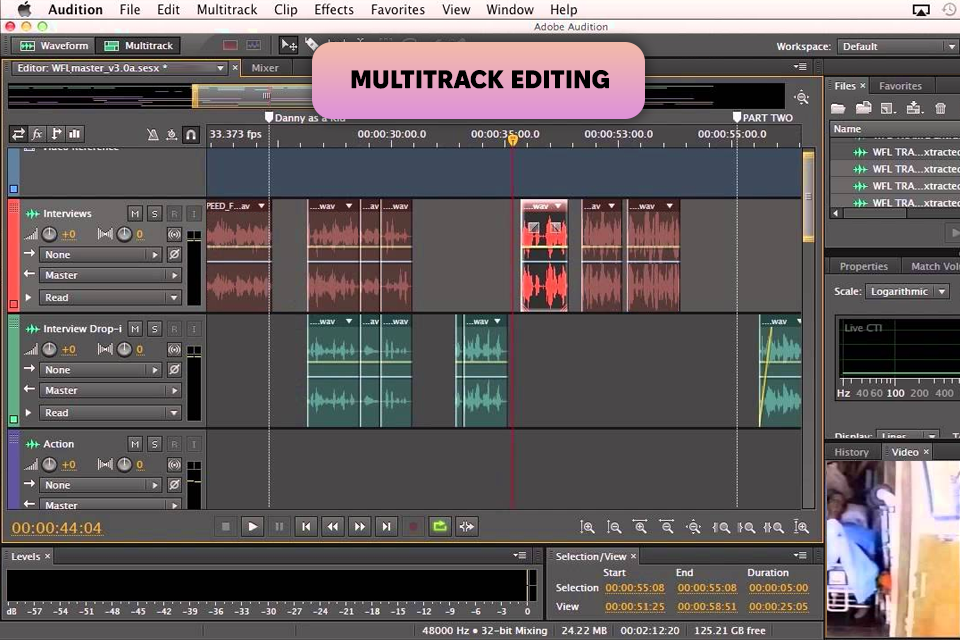
When I was just at the start of my audio production career, I was impressed by the variety of high-quality audio editing software I could choose from. My goal was to find a software that was both suitable for beginners and had a feature set expansive enough to accommodate my future professional needs. Adobe Audition CC 2018 v.11.0.1.49 has proven to be the ultimate answer to all my problems.
After I downloaded Adobe Audition CC for the first time, I was impressed by its stylish UI and wide range of features that felt very intuitive to navigate. This software also allows multitrack editing, which is extremely convenient when handling complex audio projects.

I was extremely happy with the real-time clip stretching tool. It enabled me to conveniently tweak the timing and pitch of different audio fragments. As someone who produces both podcasts and music tracks, being able to fine-tune audio clips with such precision has been incredibly valuable.
Meanwhile, the spectral frequency display made my job of dealing with background noise significantly easier. Rather than adjusting different parameters randomly, I could analyze the flaws in the audio and get rid of them with maximum accuracy. What previously took a lot of time and nerves, is now a convenient and straightforward part of my workflow.

|
File name:
|
adobe_audition_2017_2023_win.exe (download)
|
|
File size:
|
1.4GB
|
|
File name:
|
adobe_audition_2017_2023_mac.dmg (download)
|
|
File size:
|
1.4GB
|
|
File name:
|
adobe_audition_cs6.exe (download)
|
|
File size:
|
2GB
|
|
File name:
|
adobe_audition_cs5.exe (download)
|
|
File size:
|
1.5GB
|
|
File name:
|
adobe_audition_3.0.exe (download)
|
|
File size:
|
1GB
|
✔️ Unified audio restoration functionality. As an audio editing expert, ensuring the quality remain consistent throughout the entire project is incredible important, and Adobe Audition allows me to achieve that goal by providing noise reduction, sound repair, and clarity restoration features. Whether I’m editing a podcast or someone’s voiceover, I can always produce a professional result without having to use any third-party applications.
✔️ Real-time effect preview. This software lets me preview effects in real-time, which has saved me hundreds of hours on post-production work over the years. Rather than having to wait to see how any edit affects the final result, I can instantly evaluate the look of effects like reverb, equalization, or compression without skipping a beat. This not only helps improve my efficiency but also increase the precision with which I make adjustments.

✔️ Multitrack editing for elaborate projects. When editing interviews, music tracks, or movie audio, I always rely on the available multitrack editing functionality. Adobe Audition CC lets me layer and mix several tracks as I see fit to achieve the desired result. This is particularly useful when dealing with dialogue, background music, and various audio effects while ensuring they don't' disrupt each other.
✔️ Robust sound effects. Adobe Audition provides a wide range of effects that encompass everything from pitch correction to time stretching. It’s also compatible with plugins that allow expanding its functionality even further. As such, this software is equally capable of creating cinematic soundscapes and commercial-grade music compositions.
❌ Small selection of integrated music assets. A huge omission from Adobe Audition compared to alternative software is an integrated library of audio effects and free music. There are plenty of workarounds around this issue, but finding the necessary assets on other platforms can be quite time-consuming, which is a particularly big problem when trying to meet a tight deadline.
❌ Steep learning curve. My first few sessions made me feel like Adobe Audition is a tough nut to crack and master. Since it’s incredibly versatile, learning all the available features and how to properly leverage them is quite challenging. If you’re still a beginner, be prepared for a rather steep learning curve.
If you think that Adobe Audition has too many unnecessary features or if you’re restricted in funds like I was back in the day, there are several top-tier free audio editing solutions I can suggest instead. I’ve used them to produce professional audio tracks without having to break the bank. Even though they all have their drawbacks, they still deserve your attention.
You can download Audacity, which is the optimal option for handling simple audio editing tasks. It’s an open-source audio editor that doesn’t require powerful hardware and excels at importing, mixing, and layering tracks. It also makes it easy to add timers to your recordings and handle both stereo and multitrack projects.
However, Audacity has a destructive workflow, meaning any edits you make can’t be reverted. This is acceptable for everyday use, but such a restriction can be a deal-breaker for more complex professional projects.
WavePad is another free Adobe Audition alternative that has proven to be very useful. It offers intuitive tools and allows previewing different effects before you apply them to your project. It also has a large asset library that significantly streamlines the editing process. That said, WavePad doesn’t support batch processing, which can lead to a frustratingly slow workflow when handling projects with a large number of separate files.
Ocenaudio is the optimal choice if you’re interested in a basic, reliable solution for editing big projects. I come back to it whenever I have to process a demanding project on a less powerful device, as it can tackle any task from encoding to filtering without slowing down my PC.
Ocenaudio’s main weakness is that it doesn’t allow stacking several effects simultaneously. It’s a relatively small issue, but if you tend to layer edits often, this might make you consider using other software instead.